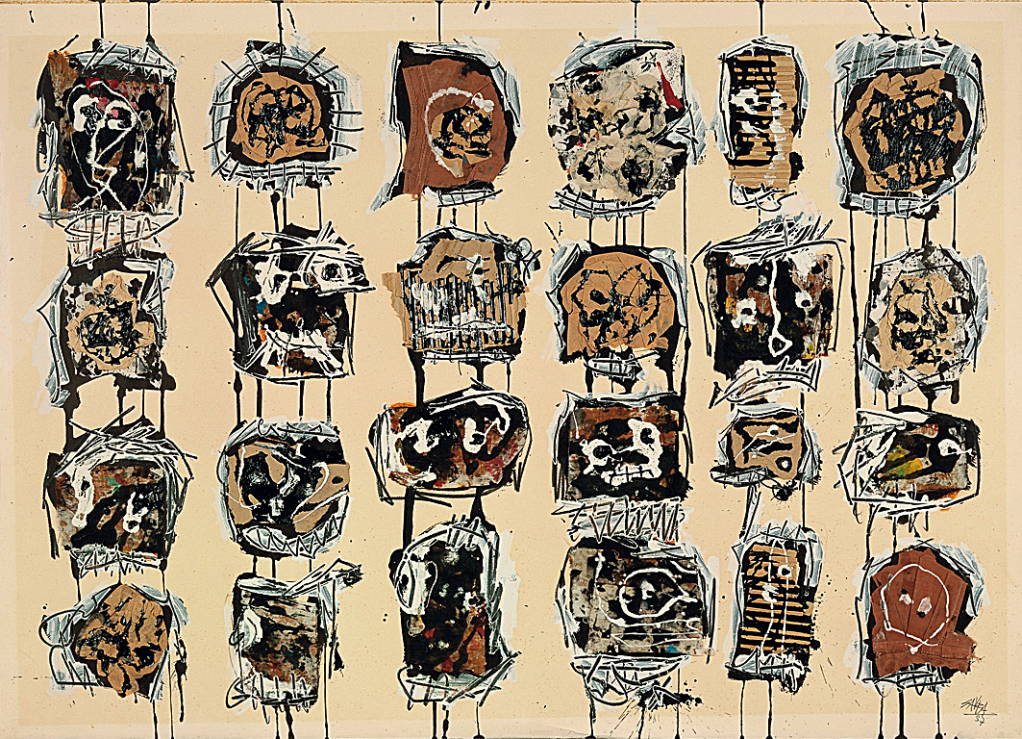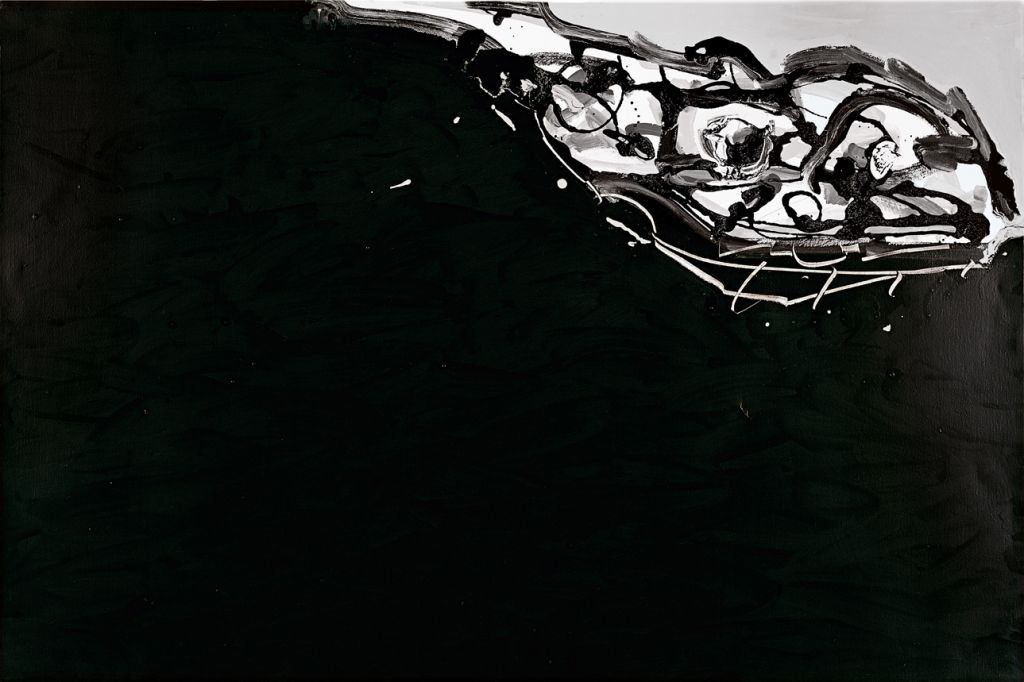Saura, Antonio
Huesca, Spain, 1930 | Cuenca, Spain, 1998

19
43
Contracts tuberculosis and has to stay in bed for five years.
47
Begins to paint and write.
50
Holds his first solo exhibition, at the Libros de Zaragoza bookshop in Saragossa.
51
Self-publishes his poetic text Programio.
52
Saura’s first exhibition in Madrid takes place at the Buchholz bookshop.
54
Moves to Paris, where he meets the Surrealists.
56
The Biblioteca Nacional de España in Madrid holds an anthologic exhibition on Saura’s work.
57
His first solo exhibition in Paris takes place at Galerie Stadler. Co-founds the group El Paso, along with artists Rafael Canogar, Luis Feito, and Manuel Millares, among others.
58
Participates, together with Eduardo Chillida and Antoni Tàpies, in the XXIX Biennale di Venezia.
59
Participates in Documenta 2 in Kassel, Germany. El Paso exhibits at the Musée des Arts Décoratifs in Paris. Creates his first engravings. Publishes the essay Espacio y gesto.
60
Receives the Guggenheim International Award. Creates several sculptures. El Paso takes part in two exhibitions in New York: New Spanish Painting and Sculpture at the Museum of Modern Art and Before Picasso, After Miró at the Solomon R. Guggenheim Museum. The group disbands in April.
61
Holds his first solo exhibition in New York at Pierre Matisse Gallery.
63
The Stedelijk Van Abbemuseum in Eindhoven, the Netherlands, holds a retrospective exhibition of Saura’s work that is also mounted at the Rotterdamsche Kunstring in Rotterdam.
64
A retrospective of Saura’s works on paper travels to the Stedelijk Museum in Amsterdam, Staatliche Kunsthalle Baden-Baden, and Göteborgs Konsthall in Göteborg, Sweden. Takes part in Documenta 3 in Kassel, Germany. Receives the Carnegie Prize, awarded by the Carnegie Museum of Art in Pittsburgh, along with Eduardo Chillida and Pierre Soulages. Second solo exhibition in New York at Pierre Matisse Gallery.
65
Destroys roughly one hundred of his works in Cuenca, Spain.
66
Exhibits at the Institute of Contemporary Arts in London.
67
Makes his permanent home in Paris, where he exhibits at Galerie Stadler. Destroys part of his work for the second time.
68
Exhibits at the Frankfurter Kunstkabinett in Frankfurt, Germany. Decides to stop oil painting, a decision he will uphold for ten years.
69
The first monograph on Saura’s work is published by Gustavo Gili.
72
A group of far-right activists attacks Saura’s exhibition at Galería Juana Mordó in Madrid.
75
Exhibits at galleries in Stockholm, the Hague, Barcelona, Mexico City, and Munich.
77
Takes part in Documenta 6 in Kassel, Germany. Publishes a book of etchings entitled Cámara ardiente.
78
Exhibits recent graphic work at the Fondation nationale des arts graphiques et plastiques in Paris.
79
A retrospective exhibition of Saura’s work is held at the Stedelijk Museum in Amsterdam and later travels to several museums in Europe. A deliberately set fire destroys part of his archives and collection.
81
Named Chevalier de l’Ordre des Arts et des Lettres by the French government.
82
The Museo de Arte Contemporáneo in Madrid organizes a traveling exhibition of Saura’s work that is presented in several cities in Spain. Publishes the pamphlet Contra el Guernica. Awarded the Medalla de Oro al Mérito en las Bellas Artes by the Spanish Ministry of Culture.
83
Designs the sets for the ballet Carmen, produced by Carlos Saura and Antonio Gades, at the Théâtre de Paris. Director José María Berzosa shoots the film version of Carmen.
84
Begins the Auto de fe series of paintings.
85
Has a show at Cabinet des Estampes in Geneva. Mariuccia Galfetti publishes a catalogue raisonné of Saura’s graphic work.
86
The Neue Galerie-Sammlung Ludwig in Aachen, Germany, holds a retrospective exhibition of his work.
87
Creates the illustrations for the Círculo de Lectores edition of Don Quixote.
88
Publishes El pintor ilustrado.
89
The Musée d’art et d’histoire in Geneva organizes a retrospective exhibition of Saura’s large-format canvases that travels to several other museums, including the Institut Valencià d’Art Modern in Valencia, Spain, and the Museo Nacional Centro de Arte Reina Sofía in Madrid, the following year.
90
Named Officier de l’Ordre des Arts et des Lettres by the French government.
92
Presents the exhibition El perro de Goya at the Salas del Arenal in Seville and the Museo de Bellas Artes in Saragossa, Spain.
94
A retrospective exhibition of Saura’s paintings between 1948 and 1990 is held at the Museo d’Arte Moderna della Città di Lugano in Lugano, Switzerland. Saura’s early work is shown at the Museo de Teruel in Teruel, Spain.
95
Receives the Grand Prix des Arts de la Ville de Paris.
98
Dies on July 22. The Institut Valencià d’Art Modern organizes the exhibition Antonio Saura en las colecciones valencianas.




